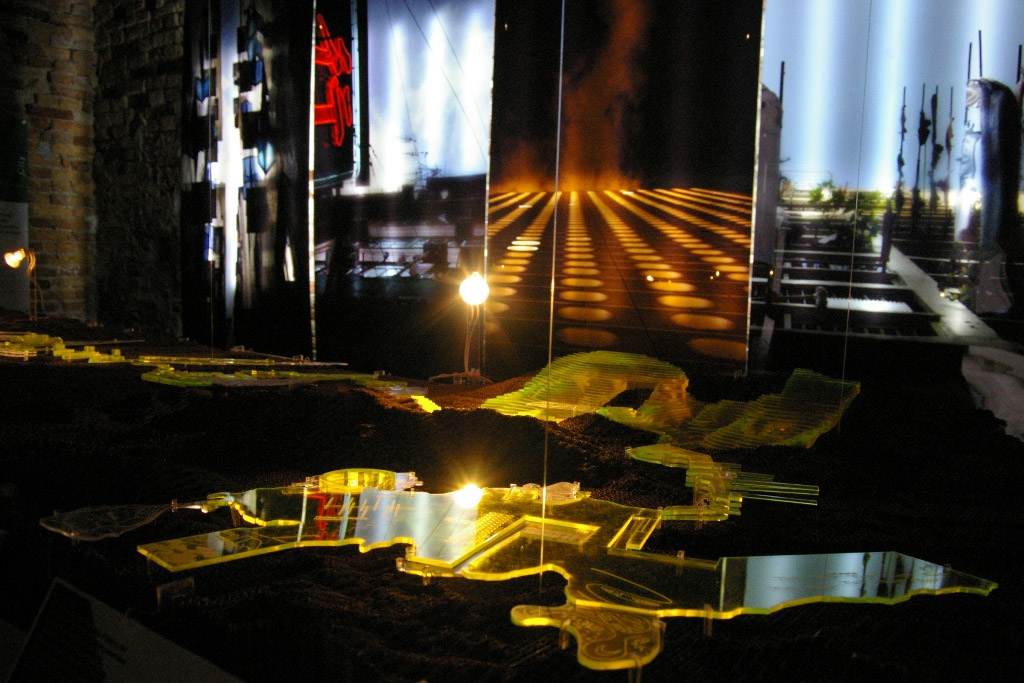
Utopia Now:
Opening the Closed Area
11th Venice Biennale of Architecture, 2008
Joshua Bolchover, Peter Hasdell, Esther Lorenz, with Pokit Poon
Utopia Now: Opening the Closed Area questions the future development of the border between Hong Kong (SAR) and Mainland China and The Frontier Closed Area which was to be redrawn in 2010, releasing 2400 hectare of land for development. The project designates the idea of a line turned into a zone as instrumental to the future development of the entire Closed Area. The two sides of the border are pulled apart creating a mutual benefit zone - a Third Space, that is neither Hong Kong nor Shenzhen but mediates the different desires of each City. The concept of Third Space describes a three-dimensional planning strategy which concentrates development in defined areas to protect natural resources and which integrates existing “ingredients” such as interests on both sides of the border, natural resources, traditional production processes as well as existing unique urban experiences of Hong Kong and Shenzhen as forces that will shape the potential lived, spatial experience of the future city.
11th Venice Biennale of Architecture, 2008
Joshua Bolchover, Peter Hasdell, Esther Lorenz, with Pokit Poon
Utopia Now: Opening the Closed Area questions the future development of the border between Hong Kong (SAR) and Mainland China and The Frontier Closed Area which was to be redrawn in 2010, releasing 2400 hectare of land for development. The project designates the idea of a line turned into a zone as instrumental to the future development of the entire Closed Area. The two sides of the border are pulled apart creating a mutual benefit zone - a Third Space, that is neither Hong Kong nor Shenzhen but mediates the different desires of each City. The concept of Third Space describes a three-dimensional planning strategy which concentrates development in defined areas to protect natural resources and which integrates existing “ingredients” such as interests on both sides of the border, natural resources, traditional production processes as well as existing unique urban experiences of Hong Kong and Shenzhen as forces that will shape the potential lived, spatial experience of the future city.
